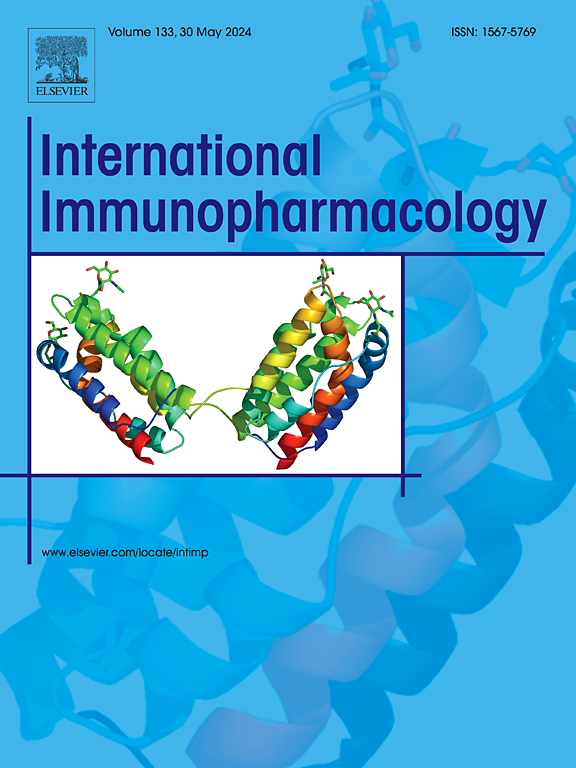Screening and validation of active components in Rosa roxburghii Tratt for anti-pulmonary fibrosis based on a spectrum-effect relationship
IF 4.8
2区 医学
Q2 IMMUNOLOGY
引用次数: 0
Abstract
Rosa roxburghii Tratt (RRT), a fruit with dual medicinal and nutritional applications, exhibits therapeutic potential against pulmonary fibrosis, yet the specific bioactive constituents underlying this effect remain uncharacterized. This study employed an integrated spectrum-effect relationship to systematically identify RRT's principal anti-pulmonary fibrosis components. Our findings demonstrate that five different polar extracts of RRT (RRTEs) differentially attenuated bleomycin-induced pulmonary fibrosis in murine models, with the ethyl acetate fraction (EAE) showing superior therapeutic efficacy. HPLC-Q-Exactive Orbitrap MS identified 56 compounds, and screened out four active ingredients related to anti-pulmonary fibrosis by spectrum-effect relationship. In vitro experiments revealed that ellagic acid, gallic acid and syringic acid inhibited fibroblast migration, attenuated intracellular ROS overproduction, and downregulated the expression levels of α-SMA and collagen I. In summary, we established for the first time a spectrum-effect relationship between RRT and pulmonary fibrosis, elucidated the key components, and provided a foundation for future clinical applications.

求助全文
约1分钟内获得全文
求助全文
来源期刊
CiteScore
8.40
自引率
3.60%
发文量
935
审稿时长
53 days
期刊介绍:
International Immunopharmacology is the primary vehicle for the publication of original research papers pertinent to the overlapping areas of immunology, pharmacology, cytokine biology, immunotherapy, immunopathology and immunotoxicology. Review articles that encompass these subjects are also welcome.
The subject material appropriate for submission includes:
• Clinical studies employing immunotherapy of any type including the use of: bacterial and chemical agents; thymic hormones, interferon, lymphokines, etc., in transplantation and diseases such as cancer, immunodeficiency, chronic infection and allergic, inflammatory or autoimmune disorders.
• Studies on the mechanisms of action of these agents for specific parameters of immune competence as well as the overall clinical state.
• Pre-clinical animal studies and in vitro studies on mechanisms of action with immunopotentiators, immunomodulators, immunoadjuvants and other pharmacological agents active on cells participating in immune or allergic responses.
• Pharmacological compounds, microbial products and toxicological agents that affect the lymphoid system, and their mechanisms of action.
• Agents that activate genes or modify transcription and translation within the immune response.
• Substances activated, generated, or released through immunologic or related pathways that are pharmacologically active.
• Production, function and regulation of cytokines and their receptors.
• Classical pharmacological studies on the effects of chemokines and bioactive factors released during immunological reactions.

 求助内容:
求助内容: 应助结果提醒方式:
应助结果提醒方式:


